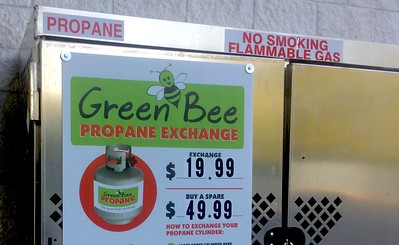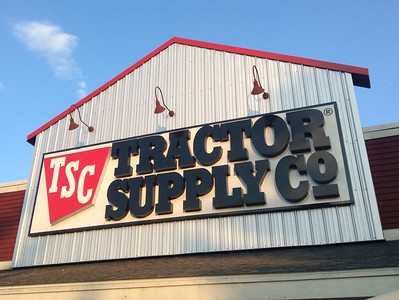
Propane tanks are a common and convenient way to store and transport propane, a widely used fuel for heating, cooking, and powering certain vehicles. However, like all pressurized containers, propane tanks are subject to wear and tear over time, and must be recertified periodically to ensure they are safe to use. In this article, we’ll take a closer look at who recertifies propane tanks and the process involved.
Propane tanks are recertified by certified professionals or recertification facilities. These individuals or facilities have the necessary equipment and training to safely inspect and recertify propane tanks to ensure they meet industry standards and regulations. The certification process for these professionals varies by state, and in some states, a certification is not required, but the recertification process is still done by certified professionals.
The exact process for recertifying a propane tank will vary depending on the tank’s size and condition, but it typically involves an inspection of the tank’s exterior, interior, and valve, as well as a pressure test to ensure the tank is able to hold the appropriate amount of propane. During the inspection, the technician will check for any dents, corrosion, or other signs of damage that could compromise the tank’s integrity. They will also check the valve and all connections to ensure they are in good working condition.
If the tank passes the inspection and pressure test, it will be recertified and given a new expiration date. The recertification process typically involves affixing a new stamp or label to the tank, which indicates that it has been inspected and approved for use.
If the tank does not pass the inspection or pressure test, it will need to be repaired or replaced. A tank that has failed the recertification process cannot be filled with propane or used until it has been repaired or replaced and successfully recertified.
The recertification process is important for ensuring the safety of propane tanks. Propane is a flammable and highly combustible fuel, and a faulty or damaged tank could pose a serious risk of fire or explosion. By having your propane tank inspected and recertified on a regular basis, you can help ensure that it is safe to use and in compliance with industry standards and regulations.
Propane tanks are recertified by certified professionals or recertification facilities. The process involves an inspection of the tank’s exterior, interior, and valve, as well as a pressure test to ensure the tank is able to hold the appropriate amount of propane. If the tank passes, it will be recertified and given a new expiration date. If it fails, it will need to be repaired or replaced before it can be recertified. The recertification process is important for ensuring the safety of propane tanks.
Read related article: Can You Use a 20-Year Old Propane Tank?
Suppliers and Retailers That Recertify
Recertification companies are specialized organizations that are responsible for inspecting and recertifying propane tanks. These companies employ certified technicians who are trained to conduct visual inspections and hydrostatic tests on propane tanks to ensure that they meet safety standards and regulations.
Some examples of recertification companies include:
- AmeriGas Propane, Inc.
- Blue Rhino
- Ferrellgas
- Heritage Propane
- Suburban Propane
- ThompsonGas
- U-Haul
Recertification companies typically offer services such as:
- On-site inspection and recertification
- Pick-up and delivery of tanks
- Repairs and replacement of tanks that fail inspection
- Record keeping and documentation of recertification
- It’s important to note that different states may have different regulations and requirements for recertification, and recertification – companies must be licensed and certified to perform recertification in those states.
Once you have located a nearby location, you can visit the store in person to inquire about propane tank recertification services. The staff at the store will be able to provide you with more information about the process and schedule an appointment for your tank to be recertified. They will also be able to answer any questions you may have about the recertification process or other propane-related services.
Read related article: Propane Tank vs. Cylinder: Understanding the Differences
Camping and Outdoor Equipment Stores, May Offer Recertification Services
Many camping and outdoor equipment stores may offer recertification services for propane tanks. These retailers typically have a team of experts on staff who can inspect and recertify tanks to ensure they are safe for use. In addition, some retailers may offer recertification services at a reduced cost or as part of a package deal when purchasing a new propane tank.
When looking for a camping and outdoor equipment store that offers recertification services, it’s important to check with the store and confirm their availability and cost of the service. It’s also recommended to check online reviews and ask for recommendations from friends and family to find a store that is trustworthy and reliable.
Read related article: Will the Propane Company Refill Your Tank If It is Expired?
Finding Propane Tank Certification Near Your Area
To find propane tank certification near you, you can start by searching for “propane tank certification” or “propane tank recertification” along with your location (e.g. “propane tank certification near me”). This should bring up a list of companies in your area that offer this service.
You can also check with your local propane supplier or gas company, as they may be able to provide information on certified technicians or companies that can inspect and recertify your propane tank. Additionally, you can check with your state’s regulatory agency that oversees propane use, they may also have a list of certified technicians and companies.
Or you can visit the one of the locations of suppliers and retailers mentioned above to check on the recertification service they offer. You call prior to visiting the store to verify is such service is being offered.
To learn more about NFPA guidelines, read this.
Hardware Store or Gas Station Don’t Offer This Service
A local hardware store or gas station that refills propane bottles may not have the ability to recertify a propane tank. These facilities typically only provide services such as refilling bottles and may not have the specialized equipment or trained personnel needed to conduct a thorough recertification of a propane tank. It’s recommended to look for specialized companies or organizations that are licensed and insured to perform the recertification of propane tanks.
They typically have the proper equipment and trained personnel to conduct a thorough examination and ensure that the tank meets safety standards. It’s important to ensure that the company you choose is properly licensed and insured and that they follow all relevant safety regulations.
How Often Do You Need to Recertify
The frequency of recertification for a propane tank depends on the regulations of the country or state where the tank is located and the type of tank you have. In general, most propane tanks are required to be recertified every 5 to 12 years, with some tanks needing to be recertified as often as every 5 years, while others may only need to be recertified every 12 years.
Here’s an article about 2 Ways to Know If Propane Tank is Outdated
However, it’s important to check the specific regulations of your country or state, as well as the manufacturer’s recommendations. The specific requirements may vary depending on factors such as the size and type of tank, the intended use of the tank, and the local laws and regulations.
It’s also worth noting that if a tank has been damaged, or if it has been involved in an accident, it may need to be recertified more frequently or even replaced.
The inspector will check for any defects or damage and ensure that the tank meets safety standards. You can find a list of qualified inspectors through your propane supplier, or through industry associations such as the National Propane Gas Association (NPGA). Many retailers that sell propane tanks, such as camping and outdoor equipment stores, may also offer recertification services.
To Check the Date
You can check the date of recertification of your propane tank by looking at the collar at the top of the tank. The collar is the metal ring that surrounds the valve at the top of the tank. On this collar, you will typically find a sticker or stamp indicating the date of the last inspection and the next scheduled recertification date. Some tanks also have a date stamp or label that indicates the date of manufacture or the date of the last recertification.
It’s also important to check the overall condition of the tank. If there are any signs of damage or corrosion, it may need to be recertified more frequently or even replaced. You should also check for any leaks or other signs of malfunction and have them repaired as soon as possible.
It’s worth noting that it’s the owner’s responsibility to ensure that the tank is in good condition and up-to-date with its recertification. It’s important to recertify your tank on time to ensure that it’s safe and legal to use.
The Types of Propane Tanks Requiring Recertification
Propane is a widely used gas, and the tanks it’s stored in come in various shapes and sizes. It’s essential to know that all propane tanks, regardless of their size or design, have a lifespan. After a certain period, these tanks require recertification to ensure they are safe for continued use. Below is an overview of the different types of propane tanks and their recertification needs:
1. Portable Propane Cylinders
- Common Sizes: These cylinders are the smaller tanks you might be familiar with, often used for grilling, camping, or torches. They typically range from 1 pound to 40 pounds.
- Recertification: These tanks generally need recertification 12 years from the manufacturing date and every 5 to 10 years thereafter, depending on the recertification method used.
- Usage: Due to their portability, these tanks are more prone to dents, dings, and damage. Regular inspection and recertification ensure they’re safe from potential leaks or hazards.
2. Large Stationary Tanks
- Recertification: Larger tanks have a longer initial service life before requiring their first recertification, often around 10 to 12 years. After the first check, they usually need recertification every 5 to 10 years.
- Common Sizes: These are the big tanks often seen in rural areas, at businesses, or homes that rely on propane as a primary fuel source. They can range from 100 gallons to 1,000 gallons or more.
- Usage: These tanks are designed to be stationary and are often placed on a permanent base. They’re less likely to have physical damages compared to portable ones, but given the larger volume of propane they hold, it’s crucial to ensure they’re in good condition.
Why the Difference in Recertification?
The primary reason for the difference in recertification timelines lies in the usage and wear-and-tear of the tanks. Portable propane cylinders are more exposed to various elements, get moved around often, and are more prone to damage. On the other hand, stationary tanks, despite being larger and holding more propane, are designed to sit in one place, reducing the chances of physical damage. However, both types of tanks are exposed to internal pressures and potential corrosion, which makes regular recertification crucial for safety reasons.
No matter the size or type of your propane tank, regular recertification is vital. It ensures that you can safely store and use propane without any risks or worries.
Why You Shouldn’t Use Old Propane Tanks
| Reason | Explanation |
|---|---|
| Safety Comes First |
Old tanks might leak. Leaks can cause fires or explosions if they meet a spark or open flame. This is very dangerous for you and those around you. If propane leaks inside, you might breathe it in. This can make you feel dizzy or even pass out. Propane that leaks can also harm plants, animals, and our environment. |
| It Might Cost You More |
Leaks mean you’re losing propane. This means you’ll have to buy more often. Your appliances, like stoves or heaters, might not work well if your tank is old. This can also damage them. |
| Legal Troubles |
You might have to pay fines if you use an old tank. This is because there are rules about safe tank use. If your old tank causes harm or damage, you might be in trouble. Others can ask you to pay for damages or even take you to court. If something bad happens because of your old tank, your insurance might not help you pay for it. |
| Bad for Business |
If you run a business, people might not trust you if they know you’re using old tanks. You might even have to close your business until you get a good tank. |
| Maintenance Woes |
Old tanks can break down often. This means you’ll have to fix them more. If you keep using an old tank and it stops working, replacing it suddenly can be expensive. |
How to Prepare Your Propane Tank for Recertification
Ensuring your propane tank is in good condition is vital not just for safety but also for its continued use. If your propane tank is approaching its recertification date, there are several steps you should follow to get it ready. Here’s a guide tailored just for you:
1.. Empty Your Tank and Make Sure It’s Free of Residual Gas
- Drain Your Tank: Try to use up all the propane in your tank. If you can’t use it all, contact a local propane distributor or hazardous waste facility to guide you on how to safely empty it.
- Ventilate Your Space: Always work in a well-ventilated area when you’re handling your propane tank. This will ensure any residual gas dissipates safely.
- Safety First: Remember to wear gloves and safety goggles. It’s always better to be safe than sorry!
2. Clean Your Tank and Perform Basic Maintenance
- Clean the Outside: Over time, your tank might gather dirt or grime. Take some warm water mixed with mild dish soap and use a soft-bristle brush to clean it. Be gentle and avoid abrasive materials that might scratch the paint or surface.
- Look Out for Rust: Once you’ve cleaned your tank, inspect it for any rust. Minor rust spots can be rubbed off with sandpaper, but extensive rust could be a sign of deeper issues.
- Examine Valves and Nozzles: Make sure the valves and nozzles on your tank are free from debris and working correctly. If something seems off, it might be a good idea to replace them before getting your tank recertified.
3. Check for Signs of Wear and Tear
- Spot Any Damages: Take a close look at your tank. If you notice any dents, bulges, or other physical damages, these could be problematic during recertification.
- Verify the Date: Your propane tank will have a date stamped on its collar, indicating when it was manufactured or last recertified. Make sure your tank’s certification is still valid.
- Test for Leaks: Here’s a quick trick: mix some dish soap with water and smear it over your tank’s valves and connections. Then, slightly open the tank valve. If bubbles form, you have a leak. Close the valve right away and get professional help.
By following these steps, you’re setting yourself up for a successful recertification process. But, always remember, safety comes first. If you’re ever in doubt about any step, don’t hesitate to reach out to a professional for advice or assistance.
To Make a Conclusion
Propane tanks need to be recertified at regular intervals to ensure that they are safe and meet safety standards. Recertification is typically done by companies that are licensed and insured to perform the work, and they follow all relevant safety regulations.
The frequency of recertification depends on the regulations of the country or state where the tank is located and the type of tank you have. It’s the owner’s responsibility to ensure that the tank is in good condition and up-to-date with its recertification. By checking the status of your tank and having it recertified on time, you can ensure that your propane tank is safe and legal to use.

Mike is an experienced propane technician with over 15 years of professional experience in the field. He has dedicated his career to helping customers with their propane needs, from installation to maintenance and repair. Together with Jeremy, he co-founded this website to provide useful information and guidance to customers seeking reliable propane services.



